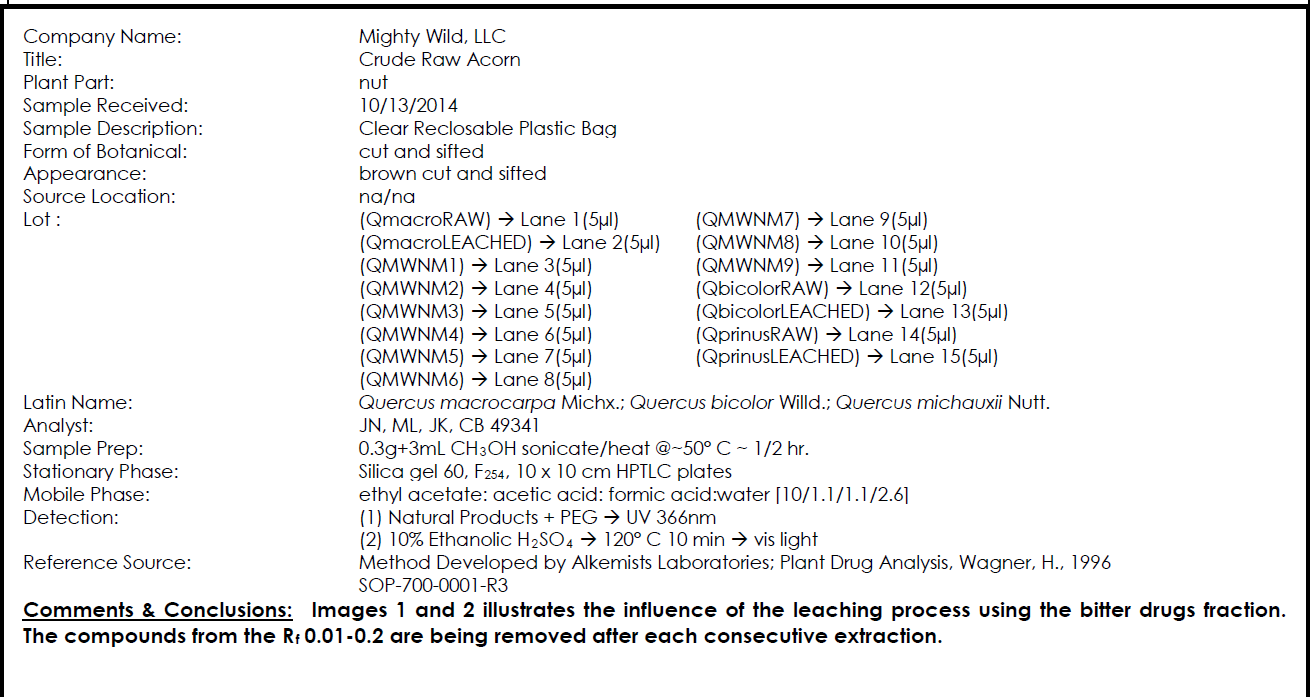How to Debitter Acorns for Eating
Over millennia, mankind has sought out sweet tasting products to light up our taste buds. Whether it is adding sugar or extracting bitter compounds, food manufacturers are looking to satisfy the sweet tooth.
Mighty Wild’s journey was no different than traditional manufacturers as we sought a way to debitter acorn flour to make it palatable for consumers. We knew of traditional hot and cold methods and several chemical interventions for debittering acorns. However, our goals were to find a process standardization for debittering acorns across a spectrum of oak species.
Red and black oak acorns are more bitter and higher in fat content. White oaks are sweeter and have more carbohydrates. We liked the characteristics of both species for different applications. Thus, we went on a search for debittering methods in order to have consistency across our products. We shared the following plea with several laboratories:
In other food products, specific compounds contribute to bitter flavors. For example, in dandelions it is sesquiterpenes. In olives it is oleuropein and ligstroside. In lupini beans it is alkaloids. In citrus, it is limonin. In vegetables and chocolate there are multiple compounds. Although Mighty Wild did not isolate the specific compound(s) attributable to bitter flavor in acorns, we did perform a bitter study. As you can see in lanes one through eleven, we have leached the acorns in twelve hour increments using a cold water method. You can see the analysis below:
Most people attribute bitterness in acorns to tannins. According to Ann Hegerman, “tannin is a rather generic term, so safe levels of one compound could be entirely different than safe levels of another compound.” The FDA Generally Regarded as Safe (GRAS) rule is that “the use of a food substance may be GRAS either through scientific procedures or, for a substance used in food before 1958, through experience based on common use in food.” Since acorn flour and starch can be found in Korean supermarkets and beyond in the United States, Mighty Wild interpreted that to be GRAS. However, we hoped to one day conduct a daily intake study. These studies can cost over $300,000.
There are several methods for removing bitter compounds that can be borrowed from other products. Rather than a hot or cold leaching method, the pea protein industry uses steam. There are several chemical reagents that can catalyze compounds: methanol, lye, ash, calcium carbonate, and baking soda. Also, MycoTechnologies is using mushroom fermentation to debitter foods.
An alternative to debittering foods is to create a value added product that uses dilution or masking for palatability. Food technologists can distract consumers by adding salt, sugar, or vinegar. Flavors can also be masked by adding fat, spices, or acid. Think of all the things that people add to their coffee or tea: spices, milk, sugar. In addition, the bitter food can also be diluted. In this case, that would be a lower percentage of acorn flour.






